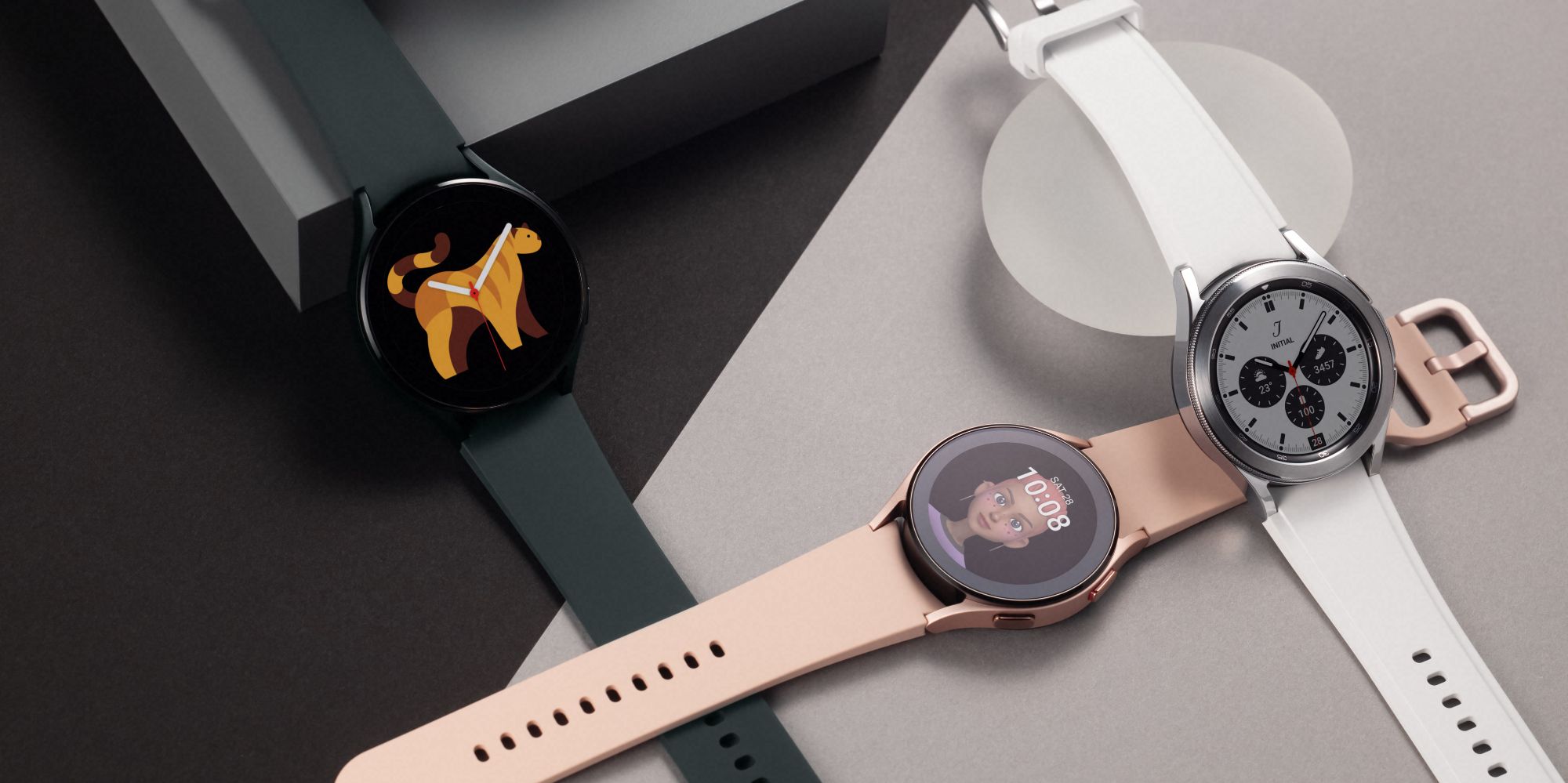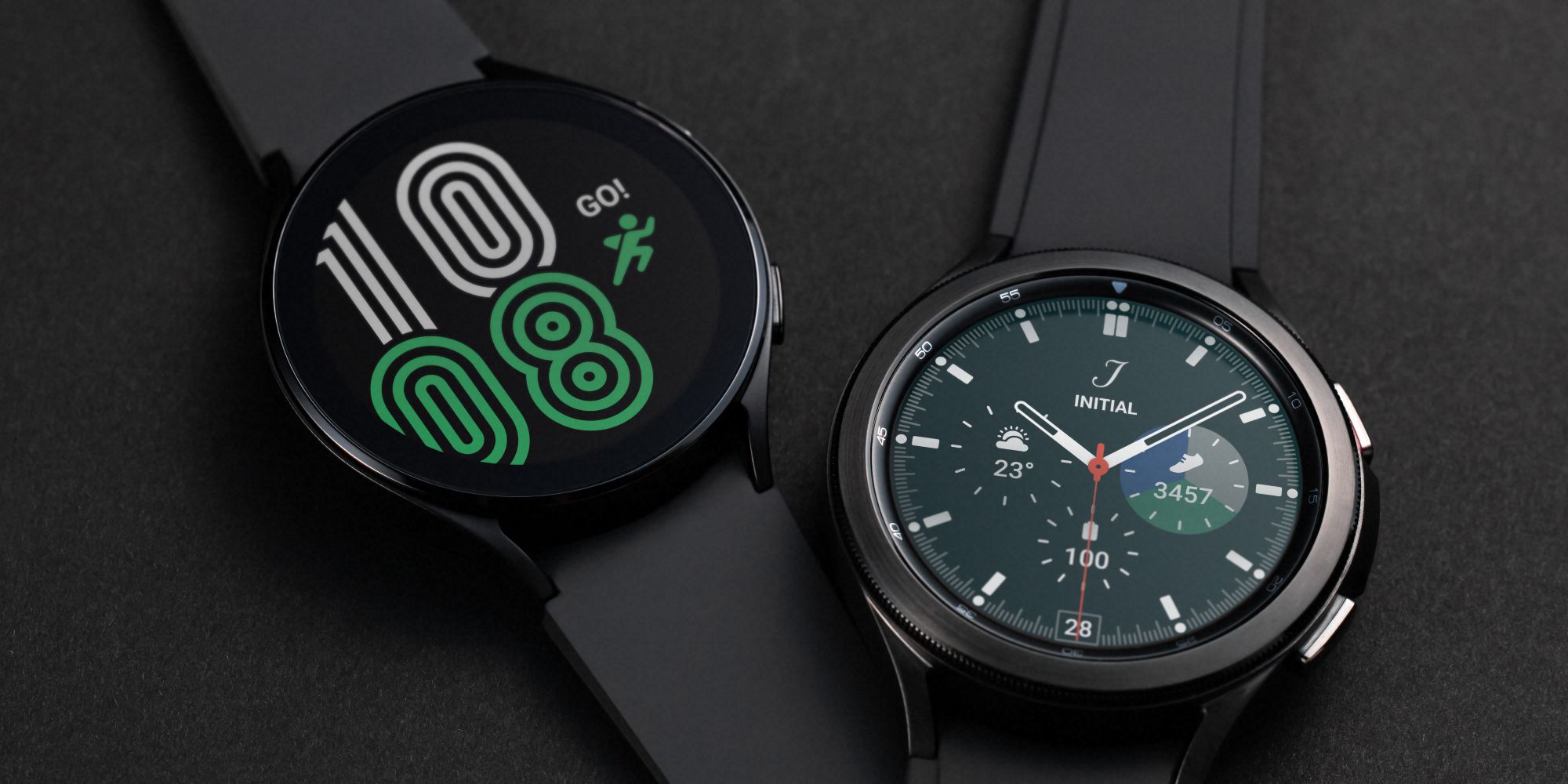Samsung's Galaxy Watch 4 & Watch 4 Classic both impress with gorgeous designs — and upon closer inspection, they're also equipped with the best specs yet for a Galaxy Watch wearable. Following the first Galaxy Watch released in August 2018, each successor that's followed has taken the lineup one step forward. The Galaxy Watch Active 2 introduced a sportier design with a more competitive price, while the Galaxy Watch 3 focused on combining a sophisticated aesthetic with ample health features. Both watches stood out as some of the best wearables for the years they were released, and the Watch 4 family looks to continue that trend.
With the Galaxy Watch 4 and Watch 4 Classic, Samsung's delivering an identical smartwatch experience across two distinctly different pieces of hardware. Think of the Watch 4 as a successor to the Galaxy Watch Active 2. It's extremely minimalistic, is made out of aluminum, and is best suited for casual/active use. The Watch 4 Classic, by comparison, has a lot of what made the Galaxy Watch 3 so appealing. It has a stainless steel design, a more intricate case, and even a physically rotating bezel.
Because of these differing aesthetics, Samsung's confirmed some key hardware differences between the Galaxy Watch 4 and Galaxy Watch 4 Classic. The baseline model of the Watch 4 is a 40mm case, featuring dimensions of 40.4 x 39.3 x 9.8mm and a 25.9g weight. There's also a larger 44mm design, which changes things to 44.4 x 43.3 x 9.8mm and 30.3g. The Galaxy Watch 4 Classic starts with a 42mm case, with that model measuring 41.5 x 41.5 x 11.2mm and weighing 46.5g. Then there's the 46mm style, which measures 45.5 x 45.5 x 11.0mm and weighs 52g.
Galaxy Watch 4 Display, Battery, Processor, And More
Depending on which size someone chooses, that directly impacts two key things — display and battery life. For the 40mm Galaxy Watch 4 and 42mm Galaxy Watch 4 Classic, there's a 1.2-inch Super AMOLED display with a 396 x 396 resolution. With the 44mm Watch 4 and 46mm Watch 4 Classic, users are upgraded to a 1.4-inch screen and a sharper 450 x 450 resolution. Both sizes of the Galaxy Watch 4 are covered with Gorilla Glass DX+, whereas the Galaxy Watch 4 Classic models get Gorilla Glass DX. Regarding battery performance, the 40mm Watch 4 and 42mm Watch 4 Classic have a 247 mAh capacity. The larger 44mm Watch 4 and 46mm Watch 4 Classic have a 361mAh cell.
Elsewhere, the Galaxy Watch 4 and Galaxy Watch 4 Classic are virtually identical. The Exynos W920 processor is the first 5nm chip inside a Galaxy Watch, delivering a 20-percent faster CPU and 10 times faster GPU. There's also 1.5GB of RAM and 16GB of storage, ensuring there's ample memory for multitasking and room for apps, music, photos, etc. Other specs include Bluetooth 5.0, Wi-Fi 802.11 a/b/g/n, NFC, GPS, and optional LTE connectivity. In regards to durability, the Watch 4 and Watch 4 Classic feature an IP68 dust/water resistance rating and MIL-STD-810G ruggedness protection.
And, of course, there are all of the health capabilities. On the underside of each watch is the new Samsung BioActive Sensor. It's slimmer than the health sensors of past Galaxy Watches while simultaneously cramming in more functionality — consisting of an optical heart rate sensor, electrical heart sensor, and bioelectrical impedance analysis sensor. Working with that is an accelerometer, barometer, gyro sensor, geomagnetic sensor, and light sensor. When all of that's added together, it's easy to see why the Watch 4 and Watch 4 Classic are so exciting. They're gorgeous, have comparable specs to match the good looks, and deliver all of that with starting price tags of $249 and $349, respectively.
Source: Samsung


